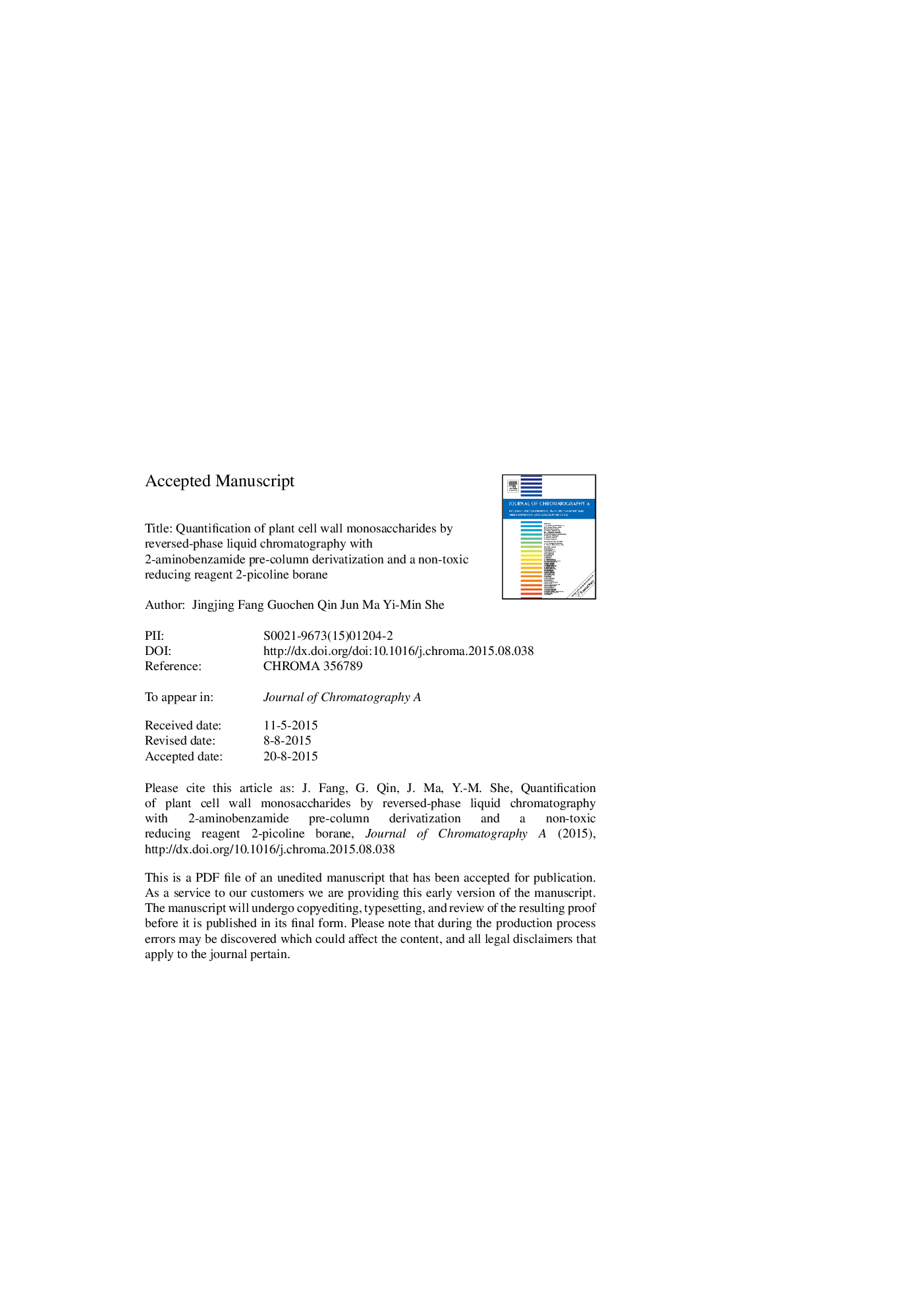| Article ID | Journal | Published Year | Pages | File Type |
|---|---|---|---|---|
| 7611407 | Journal of Chromatography A | 2015 | 33 Pages |
Abstract
In this report, we described a sensitive method for quantifying plant cell wall monosaccharides using chemical derivatization, reversed-phase high performance liquid chromatography separation with ultraviolet detection (HPLC-UV). Monosaccharides were derivatized with 2-aminobenzamide (2-AB) by reductive amination to increase the hydrophobicity and detected by ultraviolet absorption for HPLC-UV analysis. A non-toxic reductant, 2-picoline borane was utilized to replace the traditionally used sodium cyanoborohydride (NaCNBH3) to avoid the formation of toxic by-products. Experimental conditions were optimized using glucose as a model system to achieve a high reaction yield of 99%. Under the optimized conditions, we demonstrated that the derivatization yields of several saccharides with 2-AB using 2-picoline borane were all slightly higher than those observed using NaCNBH3. In plants, cell wall monosaccharides consist of arabinose, fucose, galactose, galacturonic acid, glucose, glucuronic acid, mannose, rhamnose, and xylose. Using our method, we successfully quantified these monosaccharides from Arabidopsis cell wall by HPLC-UV, and we obtained a good linearity at a wide dynamic range over five orders (1Â pmol through 10Â nmol of injection amount), a detection limit of â¼0.1Â pmole, and a high precision and accuracy.
Related Topics
Physical Sciences and Engineering
Chemistry
Analytical Chemistry
Authors
Jingjing Fang, Guochen Qin, Jun Ma, Yi-Min She,
